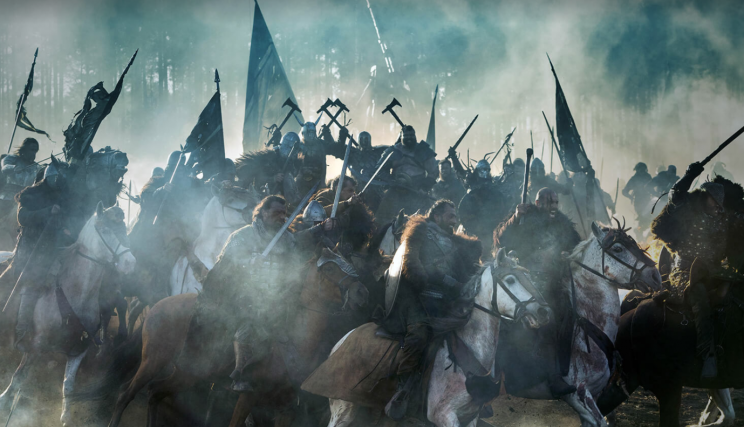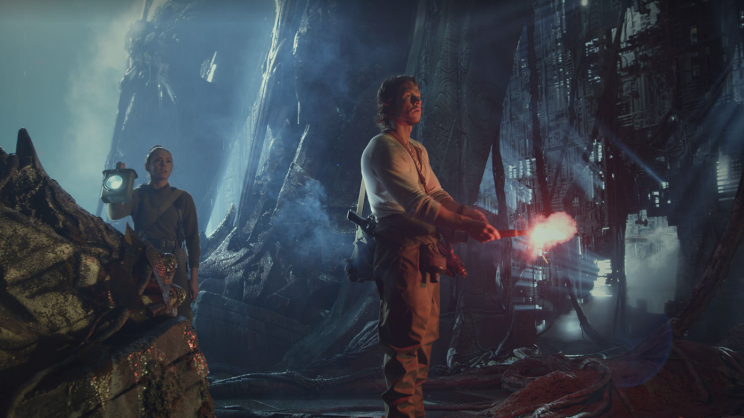'Transformers: The Last Knight': That Baffling End-Credits Scene Explained (Spoilers!)

Warning: Major spoilers follow
Transformers: The Last Knight is bigger, in just about every conceivable way, than its four predecessors, which is a considerable feat, given the scale on which director Michael Bay routinely operates. Nonetheless, even at a robust two-and-a-half hours overflowing with submarine crashes, car chases, and outright planetary collisions — not to mention some reconfigured King Arthur mythology and a WWII flashback involving Bumblebee fighting Nazis — Bay’s latest can’t contain all of its makers ideas. To wit: though he has lately claimed that this is his final go-round with the franchise, a credit-sequence stinger suggests that Optimus Prime has yet another battle looming on the horizon.
At the end of 2014’s Age of Extinction, Optimus took off into space in search of his race’s “Creators.” In The Last Knight, he finds them — or, rather, he finds his home world of Cybertron decimated, and inhabited only by a floating female goddess named Quintessa. That deity turns Optimus evil (into “Nemesis Prime”), and compels him to aid her in a quest to recover the staff of Merlin — yes, we’re referring to the mythological wizard, here played as a drunkard by Stanley Tucci — which will help her crash Cybertron into Earth. Earth, it turns out, is actually Unicron, Cybertron’s historic adversary. In doing so, Cybertron will somehow consume our planet and restore itself to its former glory. This scheme eventually leads to a climax in which the two worlds literally smash into each other, and after much CGI chaos — replete with Mark Wahlberg’s human hero Cade Yeager wielding an Arthurian sword — Optimus comes to his senses and teams with a dozen ancient Transformers Knights (as in “of the Round Table”), who amass into three-headed Transformers dragon that helps defeat Quintessa.

Thus, the world is saved. Or is it? Almost as soon as the credits roll, The Last Knight provides a stinger sequence in which a cloaked woman is seen wandering the desert, near one of the six mysterious, enormous techno-horn structures that have cropped up around the globe. She encounters one of the human soldiers working on the nearby horn, and tells him that “He” doesn’t like such treatment. The implication, ostensibly, is that she’s referring to Unicron, an actual god-like, planet-sized Transformer who’s lurking beneath Earth’s surface — and that these horns are a part of him. Then, in a close-up, a shimmering effect reveals that, beneath her human exterior, this stranger is mechanical, suggesting that she’s actually Quintessa, now in disguised form but still committed to bringing about Earth’s destruction so that Cybertron can live again.

This obviously sets up Quintessa as the villain of a forthcoming sequel, although given the sheer, uninhibited insanity of The Last Knight, making any concrete predictions about the franchise’s future seems destined to end in embarrassment. Nonetheless, Paramount clearly intends to make more Transformers films, both in the series proper, and via spinoffs — including the recently announced Bumblebee movie, which will be directed by Kubo and the Two Strings’ Travis Knight, will be set in the 1980s, and may star Hailee Steinfeld. That solo outing is given a decent foundation by Bay’s current installment, which provides the yellow hot-rod with a voice (finally!), and also reveals that he’s been a long-standing American hero, dating at least as far back as WWII (via the aforementioned Nazi-combatting flashback).
In other words, no matter if Bay and/or Wahlberg return for more shape-shifting mecha-alien mayhem, expect the Transformers to continue storming multiplexes for a long time to come.
Watch: Michael Bay Gets Sad Thinking About His Final Transformers Movie
Read more from Yahoo Movies:
Bumblebee Fought Nazis in WWII, According to Transformers: The Last Knight
New Transformers Toy Sqweeks Is More Than Meets the Eye
Here’s Our Complete Collection of Transformers: The Last Knight Photos
